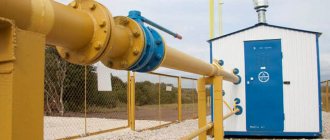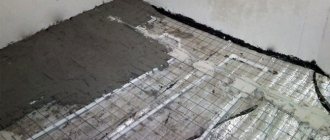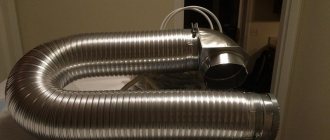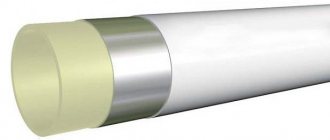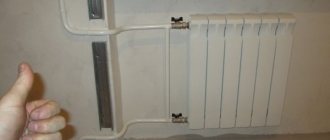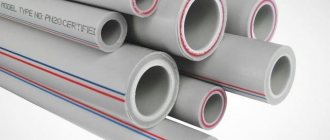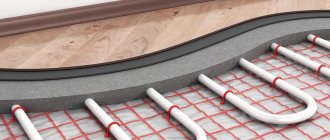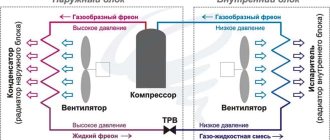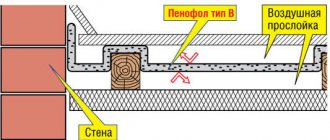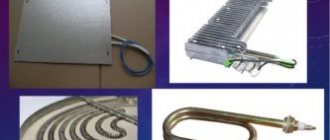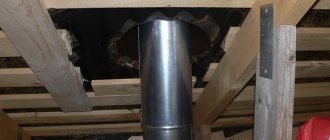Asbestos pipes are a simple, affordable and very effective solution for many communications. They have proven themselves excellent as chimneys. They are not demanding on the quality of the connection, can come into contact with different materials, and are capable of serving for a sufficient number of years, fulfilling their functions. However, many users have a question: do they need to be insulated? And if so, what materials should be used for this?
We will answer all questions further, covering the topic of insulation of asbestos pipes.
Why is this necessary?
Indeed, why insulate an asbestos pipe that is used, for example, as a chimney? When wood or coal burns, steam appears in the chimney, and a certain part of it settles on the walls of this structure. Steam condensation occurs as a result of the temperature difference between the atmosphere and the pipe.
When the heating is turned on, it is cold outside, which means cool air surrounds the chimney. The material itself is heated as a result of the operation of the boiler or stove. As a result of water condensation on the surface of the asbestos pipe, its destruction occurs. In addition, when wood or coal is burned, chemicals are formed that have a negative effect on the material.
When the boiler or stove is not heated, the pipe cools, condensate is absorbed by the material, and gradual destruction occurs. Thanks to insulation, you can slow down negative processes, and therefore extend the service life of the chimney.
The same thing happens with other options for using asbestos pipes, for example, as a sewer system.
Chimneys made of asbestos-cement pipes: characteristics
Asbestos-cement pipes are concrete products (85%) reinforced with asbestos fibers (15%). The latter are extracted from natural minerals by crushing and fluffing. Pipes made from asbestos cement are rigid and fragile (can be damaged during transportation), porous and prone to moisture accumulation. They are connected using couplings made of the same material, and there is a need for careful sealing of the joints. The installation procedure for asbestos-cement products requires some skills and more time than constructing a chimney from sandwich elements or a double metal pipe. But ordinary people justify most of the shortcomings by the low price of building materials.
Asbestos-cement pipes are inexpensive and produced in large volumes
Experienced builders recommend using asbestos-cement pipes to remove smoke from barbecues and barbecues in open areas, as well as in summer kitchens and country houses that are visited only from time to time . It is better not to install them in more substantial buildings for permanent residence.
Table: advantages and disadvantages of asbestos-cement pipes
| Positive traits | Negative qualities |
| Low cost. On average, an asbestos-cement chimney costs 3–5 times less than its analogues. | Tendency to accumulate soot and soot on the inner walls due to the rough surface. They require frequent cleaning (1-2 times a year), but since inspection hatches are not installed in them, it is sometimes impossible to do this in a timely manner. These factors reduce the service life of the chimney. |
| Dielectric properties. This means that asbestos pipes do not accumulate charge and do not require cathodic protection. If it is not provided for metal pipes, stray currents will quickly lead to electrochemical corrosion and reduce the service life of the chimney. | Cases of spontaneous combustion of soot in asbestos-cement pipes occur several times more often than in chimneys made of other materials. This could potentially lead to structural failure and fire in the building. True, a sufficient amount of soot is produced only by furnaces with which asbestos cement is not allowed. |
| Easy to install. Pipes are sawed and drilled without professional tools; the end does not require additional processing or protection. Thanks to this, you can build a chimney from asbestos cement yourself. | The need for strictly vertical installation, which often causes difficulties during installation and difficulty in choosing the optimal location for the pipe to pass through the floors and roof. |
| Resistance to heat, which makes it possible to install these pipes in the chimney. They are used in conjunction with modern gas and pyrolysis boilers, as well as for the construction of distant sections of the chimney from more intense heat sources. | The resistance of asbestos cement is limited to a temperature of +300°C, so it cannot be used to make a chimney for a stove, solid fuel boiler or fireplace. They generate too much heat, which can cause the pipe to crack. |
| High moisture resistance, which allows the use of asbestos-cement pipes without waterproofing. | The need to install third-party materials. Due to the fact that the pipes quickly heat up from the gases escaping from the boiler, it is necessary to equip the pie with thermal insulation, which, in turn, needs waterproofing. |
| Excellent strength (including internal tensile strength) with low weight, which is achieved by reinforcing concrete with asbestos fibers. | Risk of destruction due to temperature. When cooling and heating, the pipe changes its size significantly. Therefore, if a brick contour is built around it without proper clearance, the asbestos cement may burst. |
| Good weather resistance. In particular, the material resists rotting, fungi, low temperatures, and chemical influences. | An uninsulated asbestos pipe impairs draft and promotes the spread of condensation through nearby structures. In order not to spoil the characteristics of the heating system and the structure of the roof and walls, you will have to spend money on high-quality insulation. |
What doctors say about the dangers of asbestos cement
Medical contraindications are considered one of the main disadvantages of asbestos-cement pipes. It is believed that a chimney made of this material installed in a house can lead to cancer in the future. But doctors are not so clear about it. Research has confirmed the danger of the amphibole variety of asbestos, therefore its use and extraction is completely prohibited.
Chrysolite asbestos is used for the production of pipes
Products made from safer chrysolite asbestos are on sale, which can only cause harm if inhaled in the form of dust. That is, it negatively affects only workers at factories where pipes are made from mineral fiber and cement. And only because they regularly get the opportunity to inhale chrysolite dust in large quantities. But even if the artisans do not use personal protective equipment, the lungs independently (without procedures or medications) remove half of the dust in 10 days. The remaining part, when accumulated, can cause coughing, allergies, and in the worst case, asthma, but not cancer.
When studying the dangers of asbestos, attention is first paid to the lungs.
In the finished state, the products are completely safe; they can be carried with bare hands, cut and drilled without a respirator. When overheated, the material may release a certain amount of reaction products, but exceeding the temperature when using asbestos-cement products correctly occurs only in cases of force majeure. In addition, smoke along with harmful substances quickly leaves the chimney and is carried by the wind.
Therefore, doctors are confident that a properly installed chimney cannot cause diseases.
According to SNiP 41-01-2003, paragraph 6.6.13, asbestos-cement pipes can be used for the construction of a chimney if the temperature of the exhaust gases does not exceed 300 ° C.
Advantages
An insulated chimney receives certain advantages:
- the aesthetics of the appearance increases;
- the roof located near the chimney is protected;
- the wear resistance of the material increases;
- heat loss decreases.
All these advantages ensure that every owner wants to get such a chimney.
How to fix an asbestos chimney
If you did not really listen to our advice and decided to make an asbestos chimney at your own peril and risk, then pay attention to some recommendations for installing this system.
- Installation of a chimney made of asbestos products should be carried out on a reinforced concrete slab or masonry.
- When passing through the ceiling, make a fluff. To form it, you need to secure the sides of the required height along the edges of the hole and fill the gaps between the ceiling material and the pipe with non-combustible material. It is best to use expanded clay, sand, slag concrete, etc. for filling.
- When passing through the roof, you need to make an otter that will protect the attic from precipitation getting inside it. To securely fix it, a special coupling is formed from cement-sand mortar.
- The asbestos chimney sections are carefully connected to each other using heat-resistant sealant and special clamps.
Important! Monitor the quality of the joints; the fire safety of the bathhouse and your health depend on it.
We do not recommend using an asbestos-cement pipe for the chimney.
It is better to spend more money on sandwich pipes or find a good stove maker and build a brick chimney. There are many different options and methods for safe and modern smoke removal, and we talk about them on the pages of our resource.
Materials
Various insulation materials can be used for chimneys. Moreover, their price does not matter much. The fact is that little material is required, so the budget will be small in any case.
As a rule, fiber insulation, glass wool or mineral wool are used for such purposes. Cinder block slabs may also be suitable. Sometimes, perhaps the most affordable option is used - broken brick. It is important not to use materials that do not withstand high temperatures.
It is also recommended to use materials that you can lay with your own hands. Therefore, when choosing, it is recommended to read the instructions for using potentially interesting material. For example, when working with mineral wool, care must be taken to ensure that the fibers do not come into contact with the skin, eyes or respiratory system. Therefore, you need to act in equipment.
Is it possible to use an asbestos pipe and under what conditions?
You can use an asbestos-cement pipe for chimneys if several conditions are met.
- The main condition for using an asbestos product as a bathhouse chimney is to install it only in areas that are located at a considerable distance from the stove. You can install it as the final section of the chimney.
- The second condition is insulation and insulation. The pipe can be installed in a brick chimney or made into a sandwich using an external casing. This will significantly reduce the formation of condensation and increase fire safety.
Recommendations
Before starting the process, the pipe must be cleared of debris. To contain, for example, mineral wool, a casing can be used. The material for its manufacture can be galvanized steel. The size should be 5-6 cm larger than the diameter of the pipe.
The length of the structural elements should be up to 1.5 m. First, we tightly arrange the cotton wool at the bottom of the casing, then put on a new one. Such casings must be present along the length of the product.
The top element should be at some angle. A sand-cement mixture is poured inside the casing.
It should be noted that very often the desire to insulate a chimney comes down to wrapping the pipe with cotton wool and tightening it with clamps. To ensure increased efficiency, it is recommended to apply multiple layers.
Of course, such a solution will not be durable, so over time the material will have to be replaced. It is advisable to insulate the insulation using, for example, foil.
It should be noted that instead of mineral wool, the market offers other convenient solutions. For example, foamed foil polyethylene, basalt wool.
Features of the operation of chimneys made of asbestos-cement pipes
One of the main difficulties in using asbestos-cement pipes is the need for timely removal of soot. Due to the fact that only one inspection hole is installed in such a chimney, cleaning the pipes is difficult, so first of all it is worth taking care of prevention.
Chemical chimney cleaning
Under the brands Hansa (Lithuania), Spalsadz (Poland), and “Chimney Sweep” (Russia), they produce cleaning products in powder form (a mixture of copper chloride, phosphates, ammonium salts, etc.). When you pour 1-2 scoops of the composition onto burning wood, the chemicals react with the slag and soot on the walls of the chimney. Under the influence of a catalyst, pollutants are converted into flammable gases and solids. The gaseous component leaves the chimney with smoke, the remaining particles fall into the firebox and are cleaned out along with the ash. Manufacturers recommend using the product every 4-5 ignitions to keep the pipes clean. The effect of the drug is easy to notice by the whitish smoke released. A product with the same effect is also available in the form of a log impregnated with the necessary chemicals.
The action of the chemical chimney cleaning product is very simple.
Users confirm that this method of cleaning and prevention is very effective and greatly simplifies life in the absence of inspection hatches in the chimney. But given that asbestos-cement pipes are sensitive to temperature increases, anti-soot powder should be used with caution. If the manufacturer does not indicate the dosage for such a chimney, it is better to start with half the standard portion.
Mechanical chimney cleaning
Manual soot removal is carried out using round brushes and scrapers with long handles. It is best to select them with a diameter slightly larger than that of the pipe, and with a pile of metal wires. Since the inner surface of asbestos-cement chimneys is initially rough, and soot can settle deeply, cleaning with plastic brushes will not bring the desired result.
If the roof of the building is very high, there is a reason to entrust the cleaning to professionals
Brushes can be placed on rods or rods, but even the longest handles do not allow for proper cleaning of a 5-meter chimney. Therefore, they can only be used for partial cleaning of the pipe in an accessible area. But if a convenient inspection hatch is equipped, you can scrape out the chimney first from below and then from above.
To clean long pipes, you can also use a cable with a brush and a weight. Its end with a cleaning tip is lowered from above and, under the influence of gravity, sinks down to the very foundation of the chimney. Since smoke exhaust channels from asbestos-cement pipes are always mounted strictly vertically, almost all dirt can be removed in 1–2 passes.
Rotary chimney cleaning method
The rotary method is a type of mechanical cleaning. It is based on the same brush-scraper on a long flexible rod, only the holder itself can be connected to a drill or powerful screwdriver. The mechanism will provide such high brush speeds that cannot be achieved manually. Therefore, cleaning is carried out much faster and with better quality. TORNADO type rotary cleaning kits are easy to find on sale, but some craftsmen make similar devices on their own.
For rotary cleaning, you can make the device yourself
If cleaning the chimney is not difficult for you, otherwise asbestos-cement pipes will not bring much trouble.
